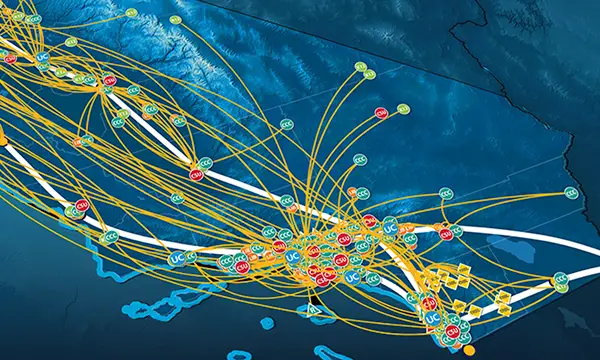- About
- Network
- Community
- Initiatives
- News
- Events
- Blog
- Publications
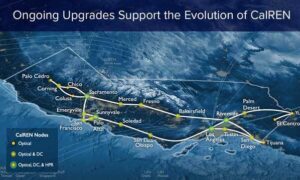
Ongoing Upgrades Support the Evolution of CalREN
Categories RENS & NRENS
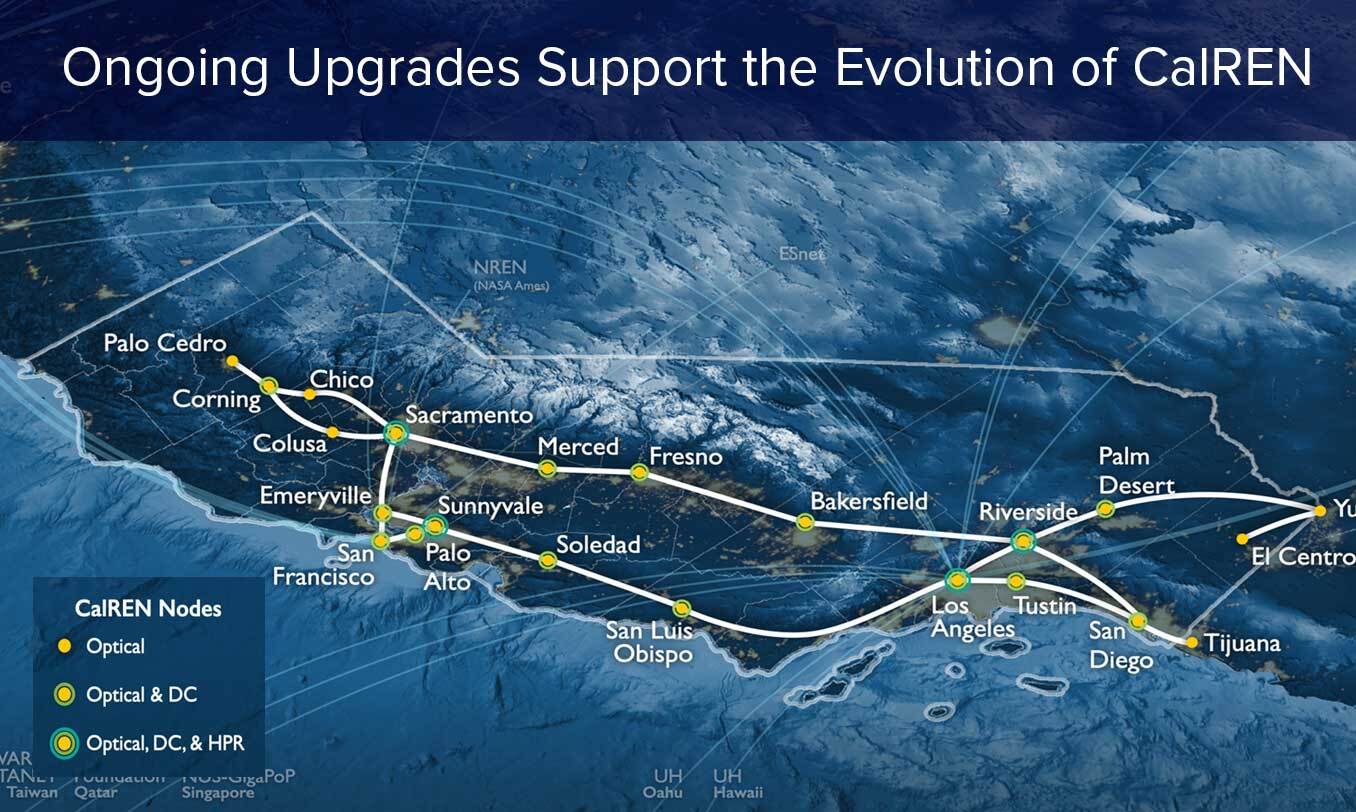
In accordance with our strategic plan, CENIC staff are completing network upgrades that will ensure network reliability, deploy cost-saving technologies, decrease our environmental footprint, and enable high-capacity services. Four projects underway include installation of 400G-plus capable hardware on CENIC’s coastal route, consolidation of the hardware on the High-Performance Research (HPR) and Digital California (DC) networks, the addition of route diversity from Sacramento to northern California, and automation of network processes.
Extending 400G to the Coastal Route
CENIC is now able to provide high-capacity services, from 100G to 400G and, eventually, terabit services, on its coastal path between Los Angeles and Sunnyvale. CENIC staff upgraded our optical line system to flex spectrum technology along the 460-mile coastal path, including nodes in Santa Barbara, San Luis Obispo, and Soledad. Flex spectrum optimizes the amount of spectrum used per wavelength, enabling more data capacity to be provisioned over fiber spans.
New high-capacity capabilities along the coastal route are part of CENIC’s strategic plan to upgrade its optical network to the latest 400G-plus capable technology. In 2019, CENIC upgraded the southern path of its network between Los Angeles and Riverside, including nodes in Tustin, Oceanside, San Diego, Escondido, and Sun City. Work will start in the fall on upgrades to the final inland path, which completes the network ring from Sunnyvale back to Los Angeles and includes nodes in Oakland, Sacramento, Fergus, Fresno, and Bakersfield. CENIC’s high-capacity connections will support data-intensive research in California, as well as regional and national efforts such as the Pacific Research Platform and FABRIC.
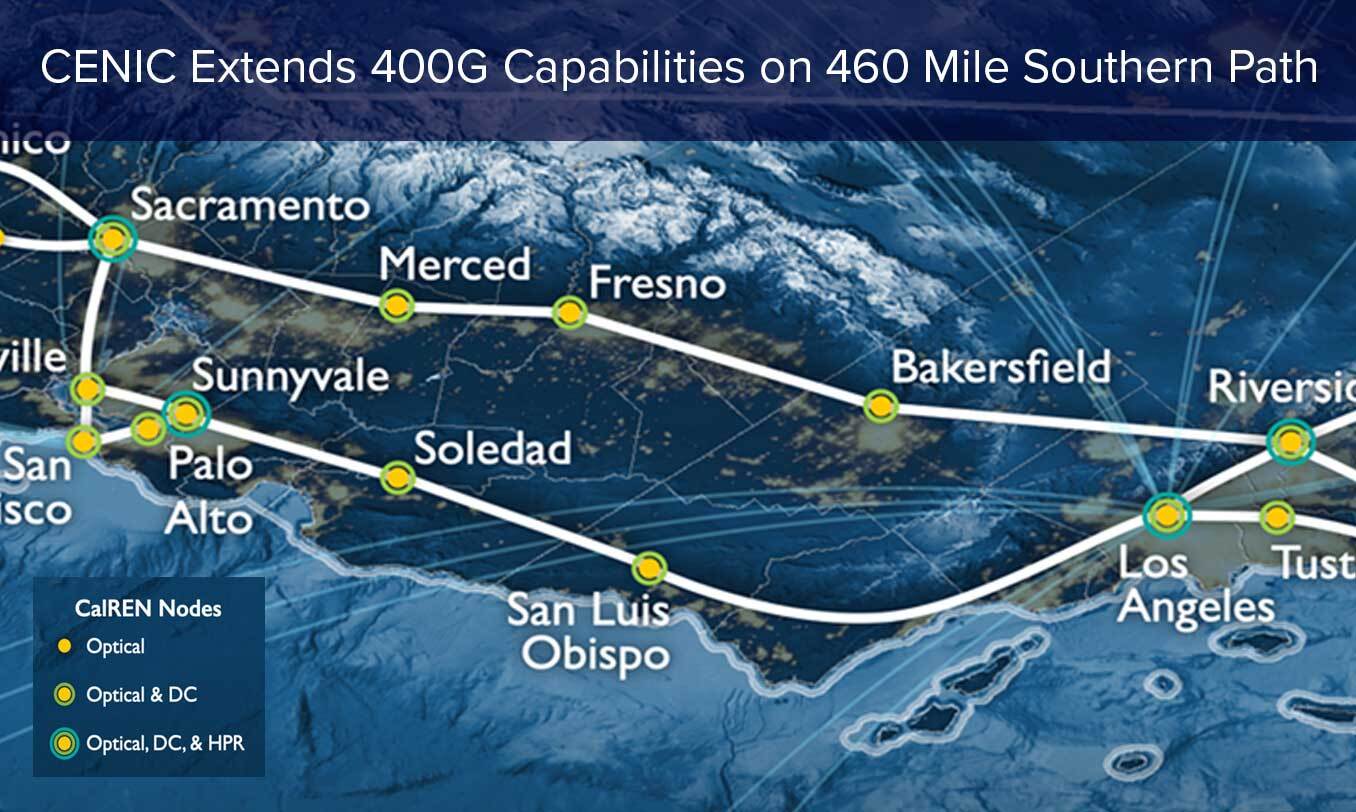
Consolidating Hardware on the DC and HPR Networks
CENIC members can now use one circuit for both CENIC’s Digital California (DC) network and High-Performance Research (HPR) network. Members had previously only been able to use each network for its separate purpose. CENIC staff have consolidated the aging HPR network hardware onto the DC network, an initiative that not only offers flexible use of the circuits, but also significantly reduces costs, streamlines operations, and decreases our environmental impact.
CENIC’s Digital California network provides high-quality network services for students, faculty, researchers, and staff at educational institutions, libraries, and other member organizations. This network tier handles connectivity to the commercial Internet through ISPs and commodity peering. CENIC’s High-Performance Research network provides leading-edge services for large-application users, predominantly at research institutions. This network tier handles connectivity to other researchers internationally, through interconnection with Internet2, ESnet, and Pacific Wave/Western Regional Network.
Consolidation of the hardware for the two networks provides cost savings on equipment, maintenance, and facilities, as well as better support for new hardware and software features such as Resource Public Key Infrastructure for improved routing security. Consolidation of the hardware for the networks was completed in late July. Future phases of the project will include consolidating backbone links as well as deploying segment routing and MultiProtocol Label Switching, which offers additional layers of functionality and segmentation. Segmentation involves splitting a larger network into smaller segments for boosting privacy and security.
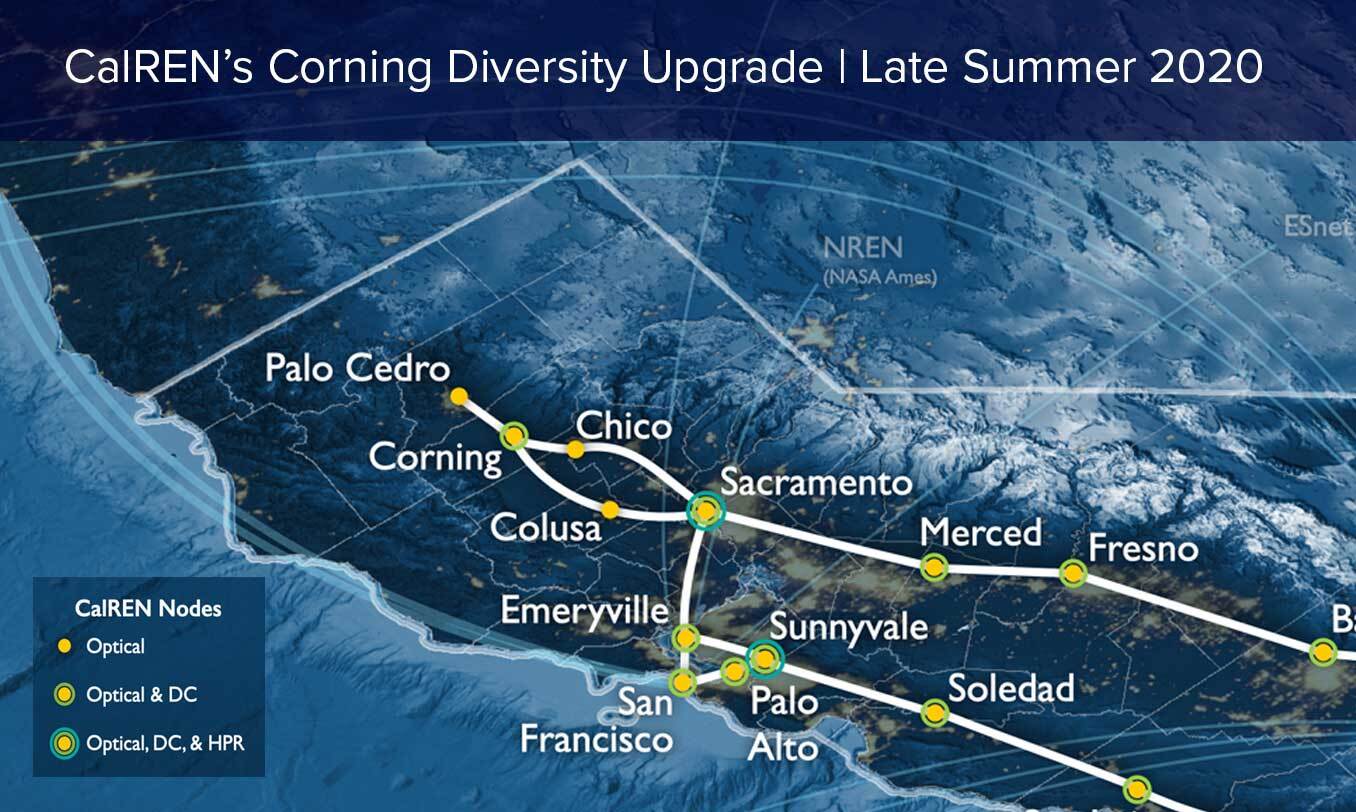
Adding Northern Route Diversity
To strengthen network reliability and increase capacity, CENIC added a diverse regional loop connecting Triangle Court near Sacramento to Corning and northern California. This path creates a regional loop connecting through Robbins, Biggs, Chico, and Palo Cedro. The Corning node was upgraded to an MX480 router enabling the new path to support 100G, and the route is slated for completion in August. Adding network diversity ensures that there are alternative paths available for network traffic in the event of a disaster or technical failure, preventing any disruption of system operation and maintaining continuity of service.
Automating Processes with the Infinity Project
To streamline processes, CENIC staff are optimizing workflows with automation, an ongoing initiative dubbed the Infinity Project. The project is part of an overall effort to move towards network automation. An initial process being streamlined will be outage announcements, using tools including ScienceLogic, a new network monitoring system that provides faster alerts, an improved view of the status of network devices, and support for next-generation network initiatives.
Related blog posts
The Big Game Is Big Data: How CENIC and the California Research and Education Network Support Member Athletics
When Fresno State needed to connect to Pac-12 Enterprises to broadcast a live football game over CBS, the Chancellor's Office reached out to CENIC for what Pac-12 later called the smoothest turn-up they've ever experienced.
Enabling Network-Based Collaboration Around the World: A Tour of CENIC and Partner Network Maps
On the Network Maps page at the CENIC website, you’ll find maps of all the networks, peering facilities, and exchanges to which CalREN connects, showing how thousands of CENIC member institutions connect to CalREN and to colleagues all over the globe.


